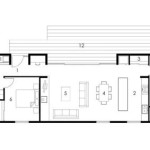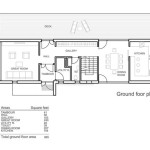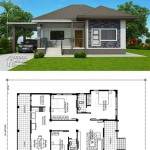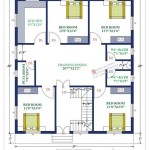Rustic cabin house plans refer to architectural blueprints or designs that serve as the foundation for constructing rustic-style cabins. These plans often incorporate natural materials such as wood, stone, and/or logs, and embody the aesthetic characteristics associated with cozy and charming mountain or woodland retreats.
Whether intended for permanent residence or occasional getaways, rustic cabin house plans offer a unique blend of functionality, comfort, and connection with nature. For those seeking to build a secluded sanctuary or a vacation home that exudes warmth and authenticity, these plans provide a solid framework.
In the following sections, we delve into the key elements of rustic cabin house plans, exploring their commonly shared features, materials, and design considerations. We will also showcase a variety of popular and inspiring plans to guide you in finding the perfect design for your dream rustic cabin.
Rustic cabin house plans encompass a range of important considerations that contribute to their unique character and functionality. Here are nine key points to keep in mind:
- Natural materials (wood, stone, logs)
- Cozy and inviting interiors
- Energy efficiency
- Rustic charm
- Functional floor plans
- Outdoor living spaces
- Remote locations
- Limited environmental impact
- Customizable designs
These elements combine to create rustic cabin house plans that offer a harmonious blend of comfort, aesthetics, and practical considerations.
Natural materials (wood, stone, logs)
Rustic cabin house plans often emphasize the use of natural materials, such as wood, stone, and logs, to create a warm and inviting atmosphere. These materials not only add to the aesthetic appeal of the cabin but also provide practical benefits.
Wood is a versatile and durable material that is commonly used for both the exterior and interior of rustic cabins. It can be used for walls, roofing, flooring, and even furniture. Wood provides good insulation, helping to keep the cabin warm in winter and cool in summer. Additionally, wood has a natural beauty that adds to the rustic charm of the cabin.
Stone is another popular material for rustic cabins. It is often used for fireplaces, chimneys, and exterior walls. Stone is a very durable material that can withstand the elements and provide good insulation. It also has a timeless beauty that can add character to any cabin.
Logs are a classic material for rustic cabins. They can be used for walls, roofing, and even flooring. Logs provide excellent insulation and can create a very cozy and inviting atmosphere. However, logs require more maintenance than other materials, as they need to be treated to prevent rot and insects.
Overall, the use of natural materials in rustic cabin house plans helps to create a warm, inviting, and authentic atmosphere. These materials are also durable and can withstand the elements, making them a good choice for cabins that are located in remote areas.
Cozy and inviting interiors
Rustic cabin house plans often incorporate design elements that create cozy and inviting interiors. These elements can include:
- Warm and inviting colors: Earthy tones, such as browns, greens, and oranges, are often used to create a warm and inviting atmosphere in rustic cabins. These colors can be used on walls, furniture, and even textiles.
- Natural materials: Natural materials, such as wood, stone, and leather, are often used in the interiors of rustic cabins. These materials add to the cozy and inviting atmosphere of the cabin, and they can also help to regulate the temperature and humidity levels.
- Large windows: Large windows allow natural light to flood into the cabin, creating a bright and airy space. They also provide views of the surrounding landscape, which can help to create a sense of peace and tranquility.
- Fireplaces: Fireplaces are a popular feature in rustic cabins. They provide a source of heat on cold nights, and they can also create a cozy and inviting atmosphere.
- Comfortable furniture: Comfortable furniture is essential for creating a cozy and inviting interior. Rustic cabin house plans often include comfortable sofas, chairs, and beds.
By incorporating these elements into the design, rustic cabin house plans create interiors that are both cozy and inviting. These cabins are the perfect place to relax and unwind after a long day spent exploring the great outdoors.
Here are some additional tips for creating a cozy and inviting interior in your rustic cabin:
- Use warm and inviting colors.
- Incorporate natural materials.
- Add large windows.
- Install a fireplace.
- Choose comfortable furniture.
- Add personal touches, such as family photos and artwork.
By following these tips, you can create a rustic cabin interior that is both cozy and inviting.
Energy efficiency
Energy efficiency is an important consideration for rustic cabin house plans, especially for cabins that are located in remote areas or that are used seasonally. By incorporating energy-efficient features into the design, you can reduce your energy consumption and save money on your energy bills.
- Insulation: Insulation is one of the most important factors in energy efficiency. It helps to keep the cabin warm in winter and cool in summer, reducing the need for heating and cooling. Rustic cabin house plans often include insulation in the walls, roof, and floor.
- Windows and doors: Windows and doors can be a major source of heat loss in a cabin. By choosing energy-efficient windows and doors, you can help to reduce heat loss and improve the overall energy efficiency of your cabin.
- Appliances: Energy-efficient appliances can also help you to save energy in your cabin. Look for appliances with the Energy Star label, which indicates that they meet certain energy-efficiency standards.
- Lighting: Energy-efficient lighting can also help you to save energy in your cabin. Consider using LED or CFL bulbs, which use less energy than traditional incandescent bulbs.
By incorporating these energy-efficient features into your rustic cabin house plans, you can reduce your energy consumption and save money on your energy bills. You can also help to reduce your environmental impact by using less energy.
Rustic charm
Rustic charm is one of the defining characteristics of rustic cabin house plans. It is a quality that evokes a sense of nostalgia and warmth, and it is often achieved through the use of natural materials, simple lines, and traditional craftsmanship.
One of the most important elements of rustic charm is the use of natural materials. Wood is the most common material used in rustic cabins, but stone, brick, and metal can also be used. These materials have a natural beauty that adds to the charm of the cabin. They also have a timeless quality that makes them resistant to changing trends.
Another important element of rustic charm is the use of simple lines. Rustic cabins are typically designed with simple, straightforward lines that create a sense of balance and harmony. This simplicity allows the natural beauty of the materials to shine through.
Traditional craftsmanship is also an important part of rustic charm. Rustic cabins are often built using traditional methods that have been passed down through generations. This craftsmanship adds to the authenticity of the cabin and gives it a unique character.
When these elements are combined, they create a cabin that is both charming and inviting. Rustic cabins are the perfect place to relax and unwind after a long day spent exploring the great outdoors. They are also a great place to entertain guests and create lasting memories.
Functional floor plans
Functional floor plans are essential for creating a comfortable and livable rustic cabin. The floor plan should be designed to maximize space and flow, while also providing privacy and comfort for the occupants.
- Open concept living areas: Open concept living areas are a popular feature in rustic cabin house plans. These areas combine the kitchen, dining room, and living room into one large space. This creates a more spacious and inviting atmosphere, and it also makes it easier to entertain guests.
- Well-defined bedrooms: The bedrooms in a rustic cabin should be well-defined and provide a private space for the occupants. The bedrooms should be large enough to accommodate a bed, dresser, and nightstand, and they should also have adequate closet space.
- Multiple bathrooms: If the cabin is large enough, it is a good idea to include multiple bathrooms. This will help to reduce congestion during peak times, and it will also provide privacy for the occupants.
- Mudroom or entryway: A mudroom or entryway is a great way to keep the cabin clean and organized. This space can be used to store coats, boots, and other gear. It can also be used as a place to change shoes before entering the cabin.
By incorporating these features into the floor plan, you can create a rustic cabin that is both functional and comfortable. A well-designed floor plan will make it easier to enjoy your cabin and create lasting memories with your family and friends.
Outdoor living spaces
Outdoor living spaces are an essential part of rustic cabin house plans. They provide a place to relax and enjoy the beauty of the natural surroundings. Outdoor living spaces can include decks, patios, porches, and fire pits.
Decks are a popular choice for outdoor living spaces because they are relatively easy to build and can be customized to fit the specific needs of the homeowner. Decks can be made from a variety of materials, including wood, composite, and metal. They can also be covered or uncovered, depending on the desired level of sun and shade.
Patios are another popular choice for outdoor living spaces. Patios are typically made from concrete or pavers, and they can be either covered or uncovered. Patios are a good choice for homeowners who want a more permanent outdoor living space that is easy to maintain.
Porches are a great way to add charm and character to a rustic cabin. Porches can be either screened or open, and they can be used for a variety of purposes, such as relaxing, entertaining guests, or simply enjoying the views.
Fire pits are a great way to add warmth and ambiance to an outdoor living space. Fire pits can be made from a variety of materials, including stone, brick, and metal. They can also be used for cooking, which can be a great way to enjoy the outdoors and create lasting memories.
Remote locations
Remote locations are often associated with rustic cabin house plans. There are many reasons why people choose to build cabins in remote locations, including:
- Privacy: Remote locations offer a sense of privacy and seclusion that is not always available in more populated areas. This can be appealing to people who want to escape the hustle and bustle of everyday life.
- Tranquility: Remote locations are often quieter and more peaceful than urban areas. This can be a major draw for people who are looking for a place to relax and recharge.
- Natural beauty: Remote locations often offer stunning natural beauty, with access to forests, lakes, mountains, and other natural features. This can be a major attraction for people who love the outdoors.
- Affordability: Land in remote locations is often more affordable than land in more populated areas. This can make it possible for people to build their dream cabin without breaking the bank.
Of course, there are also some challenges associated with building a cabin in a remote location. These challenges can include:
- Access to utilities: Remote locations may not have access to utilities such as electricity, water, and sewer. This can make it necessary to install off-grid systems, which can be expensive and time-consuming.
- Transportation: Remote locations may be difficult to access, especially during inclement weather. This can make it difficult to get to and from the cabin, as well as to transport building materials and supplies.
- Emergencies: Remote locations may be far from medical help and other emergency services. This can be a concern for people who have health conditions or who are concerned about safety.
Despite these challenges, many people find that the benefits of building a cabin in a remote location outweigh the drawbacks. For those who are looking for a place to escape the hustle and bustle of everyday life and to enjoy the peace and tranquility of nature, a remote cabin can be the perfect solution.
Limited environmental impact
Rustic cabin house plans often incorporate features that minimize their environmental impact. This can be achieved through the use of sustainable building materials, energy-efficient appliances, and water-saving fixtures. By reducing their environmental impact, rustic cabins can help to protect the natural beauty of the surrounding environment.
One of the most important ways to reduce the environmental impact of a rustic cabin is to use sustainable building materials. Sustainable building materials are those that are harvested and produced in a way that minimizes their environmental impact. These materials include recycled materials, renewable resources, and materials that are produced locally.
Another way to reduce the environmental impact of a rustic cabin is to use energy-efficient appliances. Energy-efficient appliances use less energy to operate, which can help to reduce greenhouse gas emissions. When choosing appliances for your rustic cabin, look for models with the Energy Star label. This label indicates that the appliance meets certain energy-efficiency standards.
Finally, you can reduce the environmental impact of your rustic cabin by using water-saving fixtures. Water-saving fixtures, such as low-flow toilets and showerheads, can help to reduce water consumption. This can be especially important in remote areas where water is scarce.
By incorporating these features into your rustic cabin house plans, you can help to minimize your environmental impact and protect the natural beauty of the surrounding environment.
Customizable designs
Rustic cabin house plans are highly customizable, which allows you to create a cabin that is perfectly suited to your needs and preferences. Here are a few of the ways that you can customize your rustic cabin house plans:
- Size and layout: The size and layout of your cabin can be customized to fit your specific needs. You can choose from a variety of plans, ranging from small and cozy cabins to large and spacious cabins. You can also customize the layout of your cabin to create a space that flows well and meets your specific needs.
- Materials: The materials used to build your cabin can also be customized. You can choose from a variety of materials, including wood, stone, brick, and metal. You can also choose to use reclaimed materials or sustainable materials to reduce the environmental impact of your cabin.
- Style: The style of your cabin can also be customized to fit your personal taste. You can choose from a variety of styles, including traditional, modern, and contemporary. You can also mix and match elements from different styles to create a unique look for your cabin.
- Features: The features of your cabin can also be customized to meet your specific needs. You can choose from a variety of features, including fireplaces, porches, decks, and garages. You can also customize the interior of your cabin to create a space that is both comfortable and functional.
By customizing your rustic cabin house plans, you can create a cabin that is perfectly suited to your needs and preferences. Whether you are looking for a small and cozy cabin or a large and spacious cabin, you can find a plan that meets your needs. And with the ability to customize the materials, style, and features of your cabin, you can create a space that is truly unique.










Related Posts








